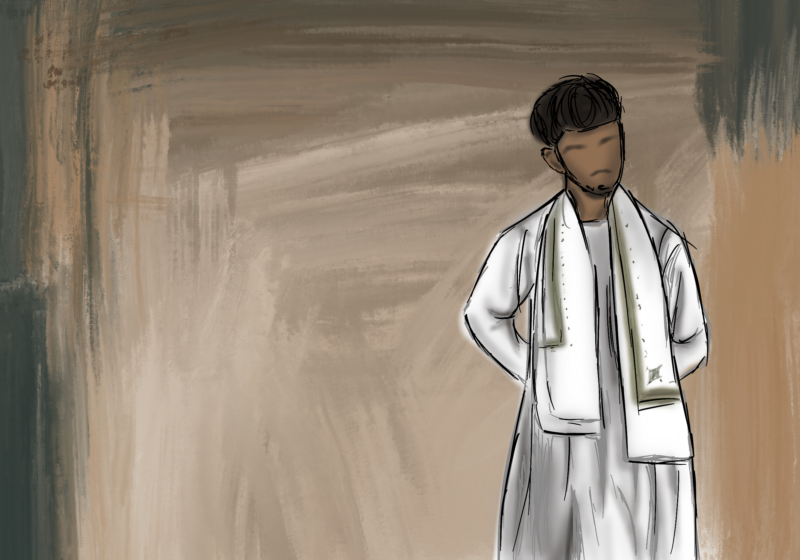Students, faculty, administration and alumni attended the groundbreaking of the new biomedical engineering/optics building on Oct. 10. The construction of the 100,000 square foot building will encourage the development of a new field, biomedical optics and highlight the environmental consciousness on campus through Leadership in Environment and Energy Design certification.”We have outgrown the Wilmot building,” Optics Institute Director Wayne Knox said. “Our largest lecture hall can only hold 40 students. So in the fall of 2001 we had a faculty brainstorming session on how to expand. Undergraduate students tell us that we need this new building for hangout space and larger lecture halls. Graduate students tell us that we need this space for the exciting new lab facilities. Staff tell us that they can do their jobs more efficiently in the newly designed space and faculty tell us that they need more space for their research. This building will give us four times the amount of space.”The Institute of Optics, founded in 1929, was the first program of higher education in the field of optics and was recently ranked first out of 147 other departments for its number of publications per faculty member. In his speech at the groundbreaking, President Thomas Jackson emphasized the importance of improving facilities in order to expand research endeavors and create a forum for collaboration. “With our most distinguished program – the Institute of Optics – and the promising future of our newest program – biomedical engineering – we see opportunities yet again in yet another field, that of biomedical optics,” Jackson said. “Buildings are about aspirations, and about demonstrated commitment. To be sure, our business is ultimately about the faculty and students, and the research and the teaching that takes place within the building. But without the building, we cannot announce our aspirations or attract and retain the best and the brightest in the world.” The groundbreaking ceremony was the first event in this year’s “Frontiers in Optics” conference which was officially held at the Rochester Riverside Convention Center from Oct. 10-14. The program branched the 88th annual meeting of the Optical Society of America and the Laser Science XX meeting of the American Physical Society. In addition to the conference, this year’s beginning construction of the BME/Optics building commemorates the 75th anniversary of the Institute of Optics and the 50th anniversary of the Biomedical Engineering Department. “Visions can become plans and plans can become reality,” Vice Provost and Dean of the Faculty Thomas LeBlanc said at the ceremony. “We hope to foster and enable interaction between engineering and medicine, basic research and clinical care and world-class research and undergraduate education.” Grassroots Co-President and junior Sam Frommer was one leader of a group of students who were pushing for the building to follow the LEED rating system guidelines.”LEED certification is a set of environmental standards and guidelines for the construction of a sustainable building,” Frommer said. “I was so excited about the whole project and putting together the packet, and then half way through it I suddenly got cold feet about showing the plans to the administration. I wondered if anyone would really care about what we were doing, or if they would listen to our idea.”Frommer and Take Five Scholar Audrey Stewart collaborated on the LEED certification proposal for “The Campus as a Sustainable Society,” a new course last fall taught by University Energy Management Specialist Morris Pierce. “We started out by meeting with [University Architect] Paul Tankel, who was sympathetic,” Stewart said. “He thought it would be best if students proposed the idea directly to the administration but in the meantime he kept exploring the options for LEED. We then created a Grassroots committee to help research green building concepts and spread the word around campus. Andy [MacNamara] presented the idea for LEED to the optics department and gave a PowerPoint proposal to Optics Department Head Wayne Knox. Meanwhile Sam and I sought support from the [Students’ Association] Senate.”Frommer and Stewart organized their research into a 25-page proposal, which included information about LEED and a copy of the Senate resolution. The goal was “Silver” certification, which required the environmental impacts to be considered during construction and building design. “Silver certification includes reclaimed green space – so they will be transforming the Wilmot parking lot into a Science and Engineering Quad, which is exciting to me, as an engineering student,” Frommer continued. “There is also an idea for a changing room for bikers, all-natural paneling – with bamboo, a Central Atrium to provide natural lighting and even sustainable landscaping with indigenous plants.”He added, “Something that most people wouldn’t think about but really makes a difference is the recycling of construction waste which makes up for something like 60 percent of all waste in America. Things like wood, aluminum, scrap metal and dry wall – they aren’t difficult to recycle, but most people just throw them out.”After making the packets, Frommer distributed them across the campus. “I talked to Paul Tankel and he said that it was on everyone’s desk. He said that it probably wouldn’t have happened if we hadn’t proposed it. It goes to show you that students do have a voice and can make a positive difference in our school and our surroundings.””The idea behind LEED certification procedure is that it will help to transform the building and construction industries because it involves everyone from the architect to the engineer to the tile-supplier. Students can learn more about LEED at http://www.usgc.org,” Stewart said.One of the design challenges of the BME/Optics building, like older buildings, is air circulation. The majority of the building will be research labs, which require a constant volume of air to be removed and new air to be heated or cooled to replace the possibly chemical-filled air. “We need to install sensors to provide air only when the lab is being used, and most labs are probably in use less than 50 percent of the time, so a sensor will significantly cut down on the energy being used,” Tankel said. “In any lab this is a problem and we’re currently working with environmental health and safety in order to figure out which labs do not contain harmful chemicals, like most optics labs do not necessarily need constant air circulation.” Tankel said the building processwould have an impact regardless of LEED status. “This is part of everyone’s education,” he said. “Whether it is LEED-certified or not, there will be a different feeling to this building because we will be taking so many environmental considerations. We’ve just started to draft a campus sustainability policy which will be all-encompassing and really allow us to view all renovations and new developments, and even major campus components like transportation and parking, from the viewpoint of the LEED checklist, which I think will make a major impact.”Welzer can be reached at bwelzer@campustimes.org.
cooking
Dietary liberation
If you are a more food-safe person than myself, you may see the obvious issue with adding raw meat to a cooked dish. In theory, this should be fine, assuming you wait for the meat to cook through.
Album Review
Mustafa’s “Dunya,” about life with all its flaws
When I first saw the new release of “Dunya,” I could already tell it would echo his love for his culture through his music.




